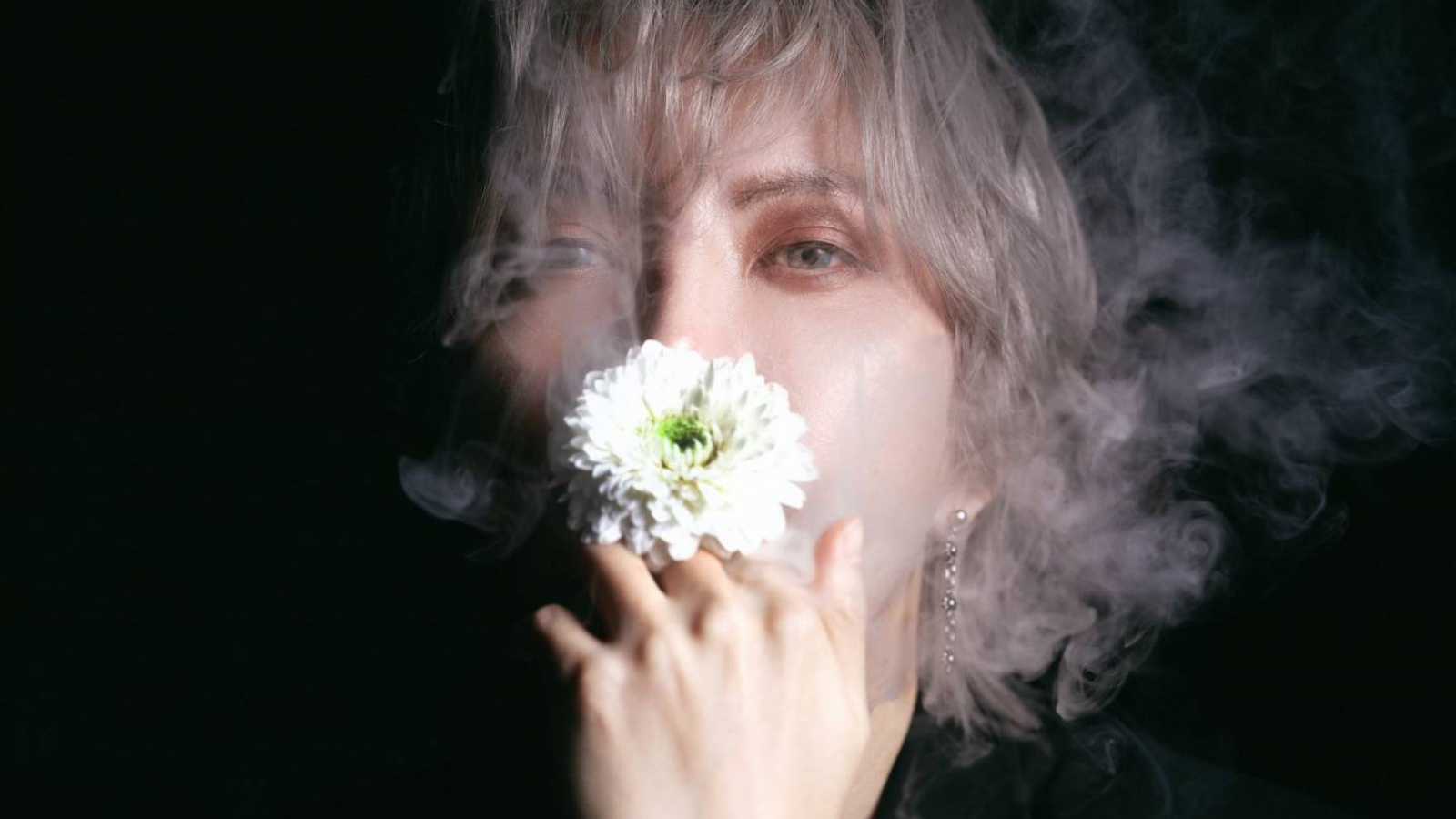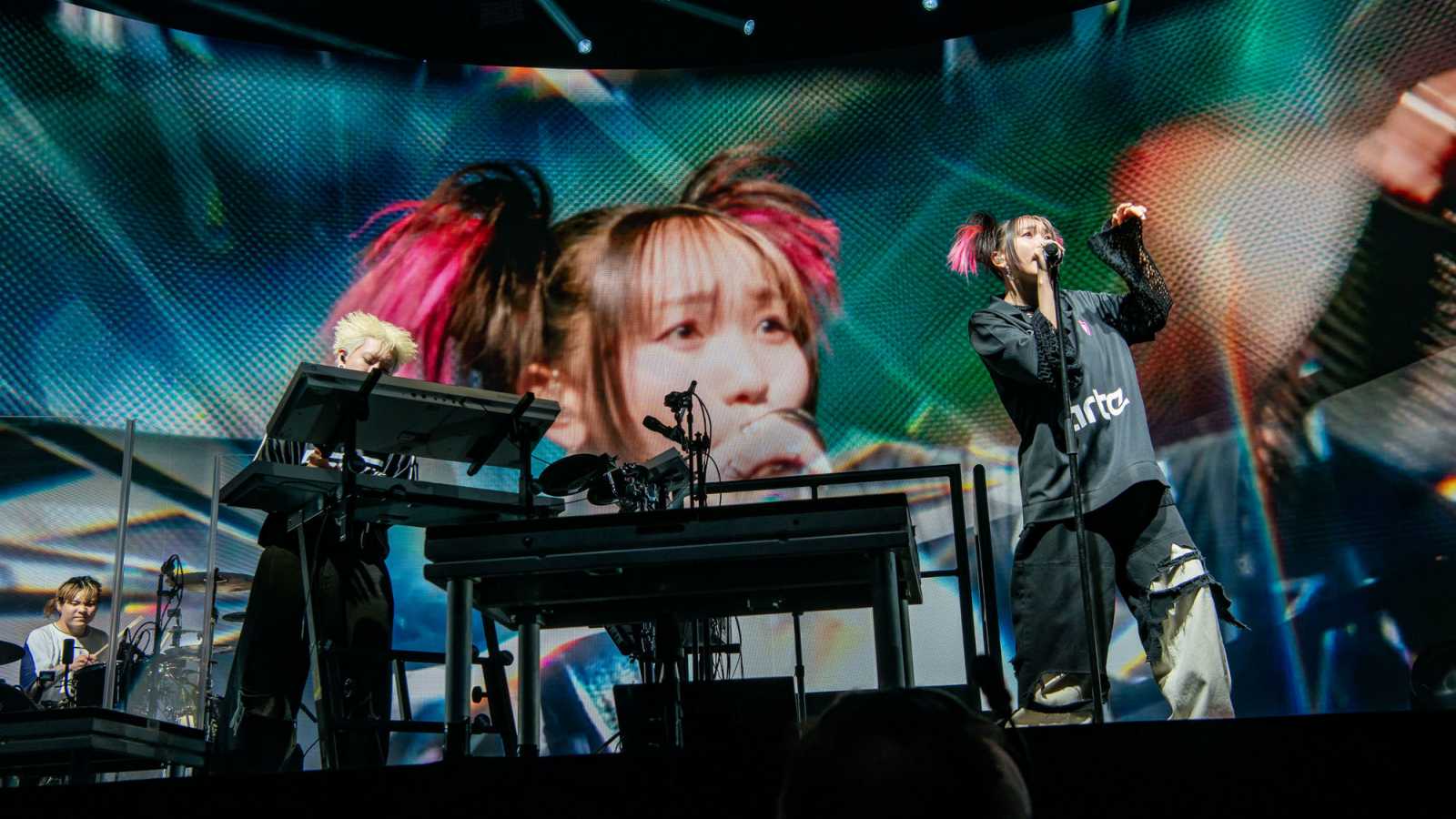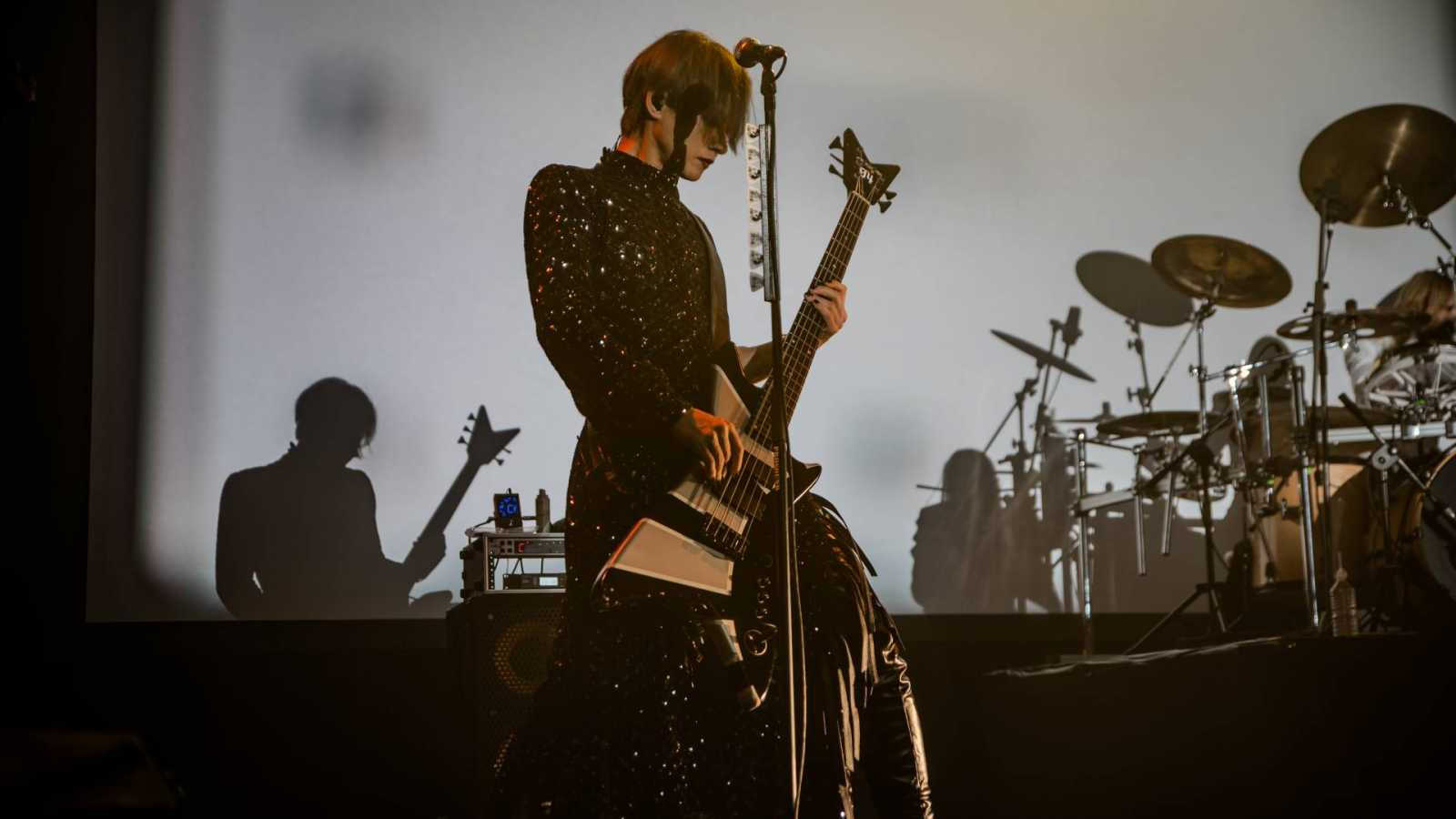More than three years have passed since the release of Moi dix Mois' last album, Dixanadu. In the meantime, band leader Mana dedicated himself to his job as freelance composer and producer for the media giant Sony, where he helped the young vocalist and cellist Kanon Wakeshima get off to a promising start. On December 15th of last year, a new Moi dix Mois album finally hit the shops, albeit so far only in Japan. How does it compare to its predecessors? Has Mana's excursion into the world of pop music influenced his work with Moi dix Mois, and if so, in that way?
The CD starts with a brief intro, In Paradisum, featuring a choir, synthesizer and pipe organ that creates a solemn and ominous atmosphere reminding of Malice Mizer's final album, Bara no seidou. With The Seventh Veil, however, the feeling of nostalgia comes to a sudden end. The song begins with a dramatic volley of brass, which according to Mana was inspired by the seven trumpets of the Final Judgment in the Book of Revelations. This unusual opening is followed by guitars, harpsichord and a galloping percussion, which are again and again interrupted by quiet, melodic interludes. What's particularly striking is the guitar work, which is much more active than on previous albums. Seth begins with guttural death grunts but soon changes to the familiar operatic vocals, supported by the soprano Kozue Shimizu.
The first guitar solo halfway through the song comes as a surprise. Up to now, Mana's compositions for Moi dix Mois focused on creating a tight, emotionally stirring atmosphere from the interplay of instruments. Showing off his technical skill was less important, and you wouldn’t have expected to hear the kind of intricate solos that, for example, Versailles is famous for. With D+Sect this approach suddenly changes: the music is as atmospheric as ever, but the guitar work has been enriched with all kinds of playful details and reaches a completely new standard.
The next track is just as dynamic and fresh. Witchcraft is an explosive mix of heavy guitar riffs and dance floor electronics, dominated by a menacing synthesizer motif that sounds like an incantation. In the melodic chorus, a harpsichord chirps in here and there. In keeping with the electronic character of the song, Seth's voice is in parts artificially distorted. Of all the songs on the album, this one is most likely to get stuck in your head.
The SECT begins deceptively gently with a choir and Seth's warm, smooth vocals, but soon heavy twin guitars cut in. Supported by strings, the initially pleasing composition develops into a monumental gothic metal hymn, and passionate emotions occasionally erupt in screaming. During the last minute, the soprano joins in and ends the song on a melancholy note.
Now the mood of the album turns contemplative. Divine Place is opened by Kozue Shimizu, whose extensive tremolos are blended with solemn guitar chords, pipe organ and finally a playful harpsichord. Almost a full minute passes before Seth joins in, and supported by heavier riffing and yet more pipe organ, he begins to build the main theme. A second soprano interlude is followed by a plaintive solo from Mana before Seth brings the opus to its dramatic conclusion. With almost a six-minute run time, this is the longest song on the album.
The gloomy Pendulum begins with the sound of rain and thunder, church bells and a balefully undulating pipe organ, which returns over and over and lends the song a distinctly sacral character. According to Mana, this composition was inspired by early 1980's gothic rock, which is reflected in the distorted guitars, tribal drum rhythm and bleak atmosphere. The emotionally charged chorus, harpsichord, violin and angelic choir, however, are firmly rooted in the present.
The powerful instrumental The Pact of Silence, whose title refers to Mana's belief that people can communicate without words, is followed by an enjoyable remake of the classic Ange, which was recently re-admitted into the band's live repertoire. The new version echoes the original's aggressive character and harpsichord dominated instrumentation, but Mana puts a strong emphasis on the twin guitars and adds a choir, making it sound both familiar as well as fresh and contemporary. It also gives Seth and K the opportunity to leave their mark on a song from the early Juka era.
Agnus Dei is a mid-tempo number with an almost cheerful air and a melodic chorus that makes you want to sing along. Guitars, choir, harpsichord and pipe organ are much more subdued and form a discrete backdrop for Seths velvety vocals, which now take centre stage. Towards the end of the first half, an unobtrusive guitar solo sets an additional highlight. The mood of the album changes completely again with Sanctum Regnum, the 2010 equivalent of Dispell Bound: at live concerts, Seth and the fans perform the "D-I-X-DIX" furi together during this song. It is almost too energetic for this purpose; you’d much rather headbang wildly to the screaming guitar chords than obediently follow arm movements! The interlude towards the end wouldn't feel out of place on the soundtrack of The Omen: suddenly all the instruments fall silent, except for a ritualistically chanting choir and a solemn little altar bell; then the guitars return and the song ends as powerfully as it began.
Dead Scape describes the hallucinations that Mana had during a fever dream, which is reflected in the instrumentation. The intro sounds as if recorded deep under water – an auditory occurrence that often accompanies high fever. Then brutal guitar riffs cut in, egged on by a driving bass rhythm, as if blood is pounding in the listener's head. Seth's voice alternates between hoarse whispers, never before heard metal screams and, in the chorus, operatic vocals. A particularly lively guitar solo adds the final charm point. All in all, it is a very unusual song and definitely a new direction for Moi dix Mois.
The finale is once again solemn. The title Dies Irae, which refers back to the Final Judgment, takes its name from a medieval hymn that was sung as part of a Catholic requiem mass. Choir and pipe organ harmonies, which again remind of Bara no seidou, contrast with heavy twin guitars and angry sounding percussion. Together, they build up to a dramatic chorus. Aside from Dead Scape, Seth sounds most impressive here.
The album ends just like it began, with an instrumental. In accordance with the title Baptisma, we hear the murmur of the sea and the breaking of waves before a pipe organ and church choir end the track on a contemplative note.
The work with Sony has clearly boosted Mana's confidence, but those who feared that it would result in a more benign sound for Moi dix Mois can breathe a sigh of relief. D+Sect is bursting with power and vitality and marries the aggression of Dix Infernal with the complexity and sophistication of Dixanadu. All the elements that make up the unmistakable Moi dix Mois sound – twin guitars, electronics and classical instruments – have been polished to a mirror finish and sparkle under an exciting new light. But the biggest surprise is the development of Mana's guitar technique towards lively solos, which elevate his music to a completely new level. After an absence of three years, Moi dix Mois needed an extraordinary album to make themselves heard in an increasingly crowded scene. They have more than exceeded this goal.



